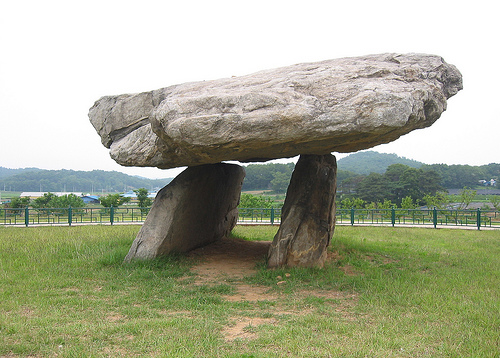Check out our Top Rewards Cards to boost your points earning and travel more!
South Korea splendidly preserves and presents its tradition. The Cultural Heritage Administration has detailed categories of treasures, aiding tourists to see the best. Scholars of Confucianism choose either South Korea or Taiwan for research.
And a passle of UNESCO sites are in Seoul, so even those on business trips have no excuse to miss them.
The Changdeokgung Palace Complex is in the heart of Seoul, one of five main palaces (UNESCO listing, WHT 360-degree photo; Anguk, Metro Line 3). If not UNESCO hunting or with extra time, The Rapid Traveler slightly prefers the close by Gyeongbokgung Palace because the National Palace Museum of Korea and the National Folk Museum of Korea are on-site, comprising a great package (Gyeongbokgung, Metro Line 3, one stop from Anguk, and with those Himalayan stairways on the Metro, walking direct between the two is better than Metro).
Jongmyo Shrine is less visually impressive but why not make a quick stop (UNESCO listing, WHT 360-degree photo; Jongno-3(sam)-ga, Metro Lines 1, 3 and 5, one stop from Anguk so consider walking).
The Integrated Ticket of Palaces includes Changdeokgung, Gyeongbokgung (but not the museums) Jongmyo and Changyeonggung and Deoksoogung Palaces. The fifth palace, Gyeonghuigung, is free.
Hwaseong Fortress is south in Suwon, part of the greater Seoul subway network (UNESCO listing, WHT 360-degree photo; Suwon, Metro Line 1). The fortress is a pleasant walk, providing views of the bustling commuter suburb. The route between the station and the fortress that The Rapid Traveler took turned out to be lined by a red light district of storefronts half-submerged below the street.
Further afield is the Ganghwa Dolmen Site, together with Gochang and Hwasun in other parts of country comprising a UNESCO site of prehistoric Golden Arches (UNESCO listing, WHT 360-degree photo). Buses take 90 minutes from Seoul’s Sinchon Station, so this is best a day trip. Seoul-based agencies run tours. Visit more for the countryside as the dolmen is somewhat in the vein of the diminutive Stonehenge in This is Spinal Tap. Those desperate to add Ganghwa to their haul without much time could charter a taxi from Seoul Incheon International Airport (ICN) if bank reserves permit.
Royal Tombs of the Joseon Dynasty is a collection of 18 sites scattered across Korea. Lonely Planet recommends Donggureung, 20 km northwest of Seoul by Metro Line 2 to Ganbyeon, transfer to bus 1-1 0r 9-2. There are also sites in Seoul itself and in other regions, details available among this collection of all South Korea’s cultural UNESCO sites. The Rapid Traveler has visited many tombs, but these were added to the list after his last South Korea trip and he does not recall if he has visited any of these ones. The tombs are repetitive so do not overdose.
Readers, which of the Seoul region UNESCO sites have you loved or want to visit?
Tomorrow, the balance of South Korea’s UNESCO sites.
Check Out Our: Top Rewards Cards ¦ Newsletter ¦ Twitter ¦ Facebook ¦ Instagram



@Joel – sorry, no rail service out to the peninsula so other than chartering a taxi, looks like you need to either catch a bus from Seoul or Incheon.
Is there an easy way to travel from Incheon airport to Ganghwa dolmen site by train/train? Appreciate your help thanks 🙂
This series is an excellent idea. I’m looking forward to these posts.
That is sad, similar to China where each building seems to have been rebuilt a half dozen times over the centuries. The Yellow Crane Pagoda in Wuhan is well over a dozen. The most recent China versions are not always the most skillful, Korea seems much better at restoring with class.
A lot of the original buildings, statues, art, and culture were destroyed by the Japanese when they attacked Korea. Hope you enjoy your stay
Okay…not in Seoul region but Gyeongju is known as the Kyoto of Korea! Among such historical treasures, Seokguram grotto, Bulguksa temple, Gyeongju Historic Areas and Yangdong Folk Village are designated as World Heritage Sites by UNESCO.
Thanks for the preview for tomorrow! Walking in Gyeongju it feels almost like tripping over stunning sights.